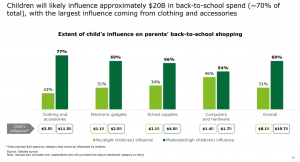Is it time to abandon the 360-degree view of the customer? Gartner analysts seem to think so. Others disagree.
Almost half of the most advanced CDP users have significant challenges with data integration, Gartner’s Matt Wakeman told an audience at Marketing Symposium. He described as “wishful thinking” the following sentiment: “If only we had a customer data platform, then we wouldn’t have to rely on IT to manage and integrate our data, and our customer data program would succeed!”
“Even though I’m close to the exhibition hall, I’m okay with saying that,” he quipped. The hall, of course, contained booths hosted by some major players in the CDP space.
Blowing up conventional wisdom
This was the week Gartner analysts set about exploding some very familiar ideas about customer data collection and management. Ideas like:
- There’s value in having a holistic view of the customer.
- The more customer data, especially first-party data, the better.
- The more channels for data collection the better.
- A seamless, fully integrated customer experience will lead to revenue growth.
- The more customer data is integrated, the better markting teams will be placed to prove ROI.
Research undermines some key assumptions
In separate sessions, Wakeman, senior director research and advisory in the Gartner Marketing Practice, and Ben Bloom, VP analyst, set out research findings that appeared to undermine some of marketing’s most fondly held beliefs about customer data.
Bloom, a leader in what Gartner calls its “Maverick” research practice, described his presentation as contrarian and not necessarily consistent with findings from other Gartner research. His conclusions, however, seemed entirely consistent with the Symposium keynote message that “less is more.”
Here are highlights from the research cited, first from Bloom’s presentation:
- 72% of marketers who believe they need every customer data point to be successful also report that the more data they collect, the less benefit they see.
- The cost of integrating data across channels rises exponentially as channels are added (on average, marketers use nine channels, but some use as many as 20). This is easily visualized. To integrate four channels with each other requires six cross-channel integrations; fully integrating 20 channels will require 200 integrations.
The conclusion? Give up on the 360-degree view of the customer because the cost of attempting to achieve it will become unmanageable. “I’m building upon research we already conducted where we found that just 14% of organizations reported having achieved a 360-degree view of the customer. There’s a question about how ambitious and expansive these data strategies are, because they are presumed to have a lot more economic benefit than I think there really is.”
The outcome of pursuing a comprehensive customer data collection strategy can be disastrous, said Bloom. “The reason that this leads brands to potentially disastrous outcomes is because they are pursuing all of that data without clear understanding of how much cost this is going to load.”
The data in itself is not valuable unless it’s utilized for business cases. “You spend all this work just to get to what is just a predecessor step. Given how hard that is, businesses need to be more pragmatic about which initiatives they pursue.” Especially, said Bloom, given the enormous technical, regulatory and privacy issues associated with the 360-degree view.
From Wakeman’s session:
- Marketers with the most integrations between data sources have about as much trouble proving marketing’s value as those with no integrations whatsoever.
- 45% of marketing teams using CDPs both for data collection and analysis and activation still have data integration problems.
“Most organizations have lots of places where customer data is stored,” Wakeman told us. “If they go down the rabbit hole of chasing all of that data, they find out two things. One, (the data sources) conflict with each other and they spend more time resolving the conflicts than getting anything done. Two, organizations have a lot of technology implementations over time, and they don’t get retired, they just keep adding on.” That means, by the time all the data is pulled together, there may be more data-driven platforms that need to be taken into account.
The view from CDP world
John Nash, chief marketing and strategy officer for leading CDP Redpoint Global, had some reservations about giving up on what Redpoint has called “the golden record” — essentially a continually evolving holistic view of the customer. “You don’t have to give up on that dream,” he said. “You actually need the golden record to create those compelling moments. Our clients are seeing results. If you have the right capabilities, you can drive revenue and reduce costs at the same time.”
If 71% of CMOs lack the budget to execute their strategies, said Nash, that’s a strategy and execution gap, but it’s rooted in a capabilities gap. “I’m not advocating that you should willy-nilly collect all data. You should start with the more valuable data and link it to business objectives and use cases. What Gartner may not be acknowledging is that consumers have a vote in this. They want personalization, they want omnichannel, they want real-time.”
Throughout the conference, Gartner advocated a focus on “catalytic marketing,” defined as creating moments that don’t just engage but actually change a customer — teaching them something new, or making them realize they had fully understood something they had thought they understood. Mark Tack, CMO at CDP Treasure Data (who attended the conference) wrote in response:
For those reading this who may think: “well, I guess this means I don’t have to invest in data…” Think again. Shifting to a catalytic mindset may seem like a disruption. But you can’t do catalytic marketing without the power of a connected data foundation provided by a CDP.
A CDP can help you get the clarity you need to make the right connections, while using your data more effectively in a number of ways — if you prioritize your goals effectively.
CDP.com
The view from data collaboration world
Data collaboration platform Liveramp was also represented in the exhibition hall. We asked CMO Jessica Shapiro for her reactions to what she had heard.
“I am of the perspective that you need to have that 360-degree view,” she affirmed. “On top of that, you can have what Gartner seems to be describing as these ‘catalytic’ moments. Having these catalytic moments seems like a layering on that helps companies break through. But if you don’t have that foundation of a 360-degree view, I don’t know how you would find the right customer at the right place in their journey to even deliver that experience.”
Is there a way forward?
It’s only fair to say that, in their respective sessions, Bloom and Wakeman each indicated some alternative ways forward for marketing organizations prepared to give up on “wishful thinking.”
From Bloom:
- Look at ways to partner to reduce the burden of relying on first-party data. Partnerships can enable the sharing of second-party data, including through data clean rooms. Admittedly, this approach can be technically complex and costly.
- Collect data through fewer channels and think carefully about what is worth collecting.
- Consider innovative strategies that guide customers to identify their priorities (think zero-party data).
From Wakeman:
- Identify narrow customer data use cases; and start with low-hanging fruit.
- Use customer-directed engagement models to encourage customers to offer up data (think zero-party data again).
Both Bloom and Wakeman touched on a more advanced option: the use of “digital twins,” created by synthesizing data from “real” customers and used to predict segmentation and behavior.
“Aiming for the moon, the nirvana of complete data integration, is actually going to trip you up,” Wakeman said. “What works a lot better is think big but start small and move and iterate and learn fast.”
The post Gartner: Give up on the complete view of the customer appeared first on MarTech.
MarTech(12)
Report Post





